          |
album
| Este album reune num só lugar as fotografias e desenhos que já estavam disponíveis em outras páginas. A idéia é tornar a história do desenvolvimento do hardware do projeto mais visível. Versões com mais resolução de várias destas fotos podem ser vistas em http://www.smalltalk.org.br/fotos/, bem como algumas que não estão aqui. | This album brings together in a single place the pictures and drawings that were already available in other pages. The idea is to make the history of hardware developement for this project easier to see. Another project list (1974 to 1998) has more machines and links. Higher resolution versions of several of these pictures can be found in http://www.smalltalk.org.br/fotos/ as well as some pictures which aren't here. |
1983
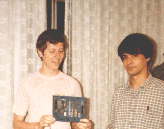
| Pegasus era um computador para redes escolares com a linguagem Logo. Os componentes principais eram os mesmos do TRS-80 Color Computer e o Dragon 32. A foto mostra Jecel Assumpção Jr. e Fábio Cunha (direita). | Pegasus was a computer for school networks with the Logo programming language. Its main components were the same ones used in the TRS-80 Color Computer and the Dragon 32. The picture shows Jecel Assumpção Jr and Fábio Cunha (right). |
1985
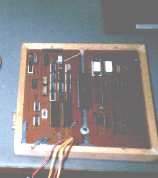
| O Merlin 1 era mais um sistema de desenvolvimento baseado no processador 68000 da Motorola do que um produto usável. Tinha uma interessante interface serial para periféricos mas que não chegou a ser usada e um dos seus componentes principais, a rede, não foi nem projetado. Inicialmente era ligado a um PC por uma porta serial e depois recebeu uma porta paralela para aumentar a velocidade de transferência de dados. | Merlin 1 was more of a development system based on the Motorola 68000 processor than a usable product. It had an interesting serial interface for peripherals which was never actually used and one of its key components, the network, was never even designed. It was initially connected to a PC via a serial port and later a parallel port was added to increase the data transfer speed. |
1986
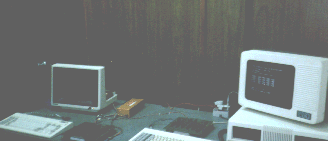 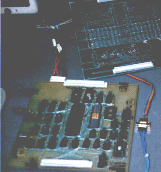
| Apesar de ter sido projetado e construído (3 protótipos em paralelo) em apenas dois meses, o Merlin 2 já era bem mais razoável como um computador Smalltalk. Tinha saída de vídeo de 16 cores (o limite do monitor CGA que deveria usar), interface Ethernet e teclado de PC. Apenas um dos 3 protótipos ganhou uma interface para mouse que infelizmente nunca funcionou direito. | Even though it was designed and built (3 prototypes in parallel) in only two months, Merlin 2 was more reasonable as a Smalltalk computer. It had a 16 color (the limit of the CGA monitor it was to use) video output, Ethernet interface and a PC keyboard. Only one of the 3 prototypes gained a mouse interface which, unfortunately, never worked quite right. |
1987
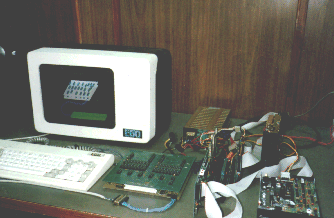
| Aqui o Merlin 2 teve sua interface de rede substituida por conectores ISA para que pudesse usar placas de PC controladores de disquete e disco rígido. | Here Merlin 2 had its network interface replaced with come ISA connectors so it could used floppy and HD controller boards from the PC. |
| O Merlin 3 era um computador 68020 com barramentos ISA e NuBus. Apenas a placa principal ficou pronta (em wirewrap) e não foi tirada nenhuma foto. | Merlin 3 was a 68020 computer with ISA and NuBus busses. Only the main board was finished (in wirewrap) and no pictures were taken of it. |
1993
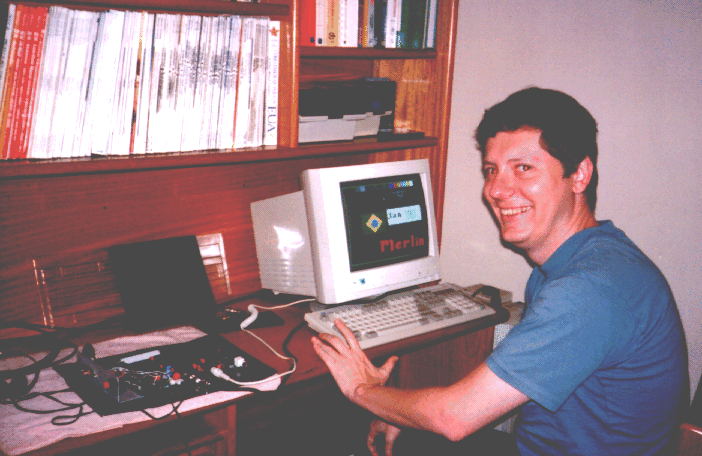
| Originalmente projetado em 1988, o Merlin 4 foi retomado em 1990 mas sua construção só foi iniciada no fim de 1992 quando seus componentes já estavam obsoletos. Usava o processador ARM2 e os componentes do Archimedes da Acorn mas com o controlador de periféricos substituido por uma interface Ethernet. | Originally designed in 1988, Merlin 4 was restarted in 1990 but its actual construction was only started in late 1992 when its components were already obsolete. It used the ARM2 processor and the chip set from the Acorn Archimedes but with the I/O controller replaced by an Ethernet interface. |
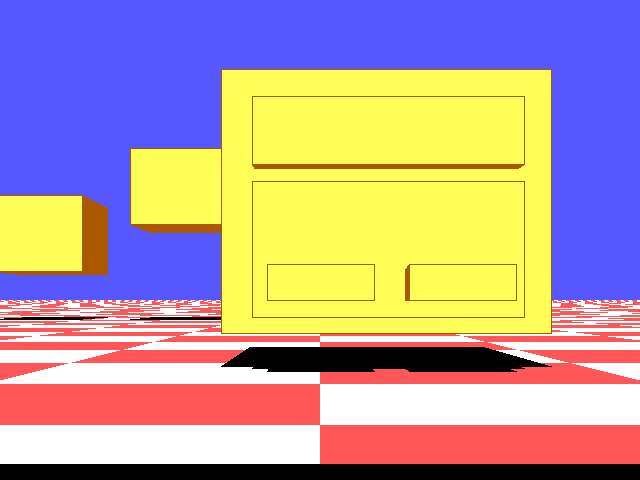
| A interface gráfica do projeto era de 3D e um protótipo foi escrito em linguagem de máquina do ARM. | The graphical user interface was 3D and a prototype was written in ARM assembly language. |
1994
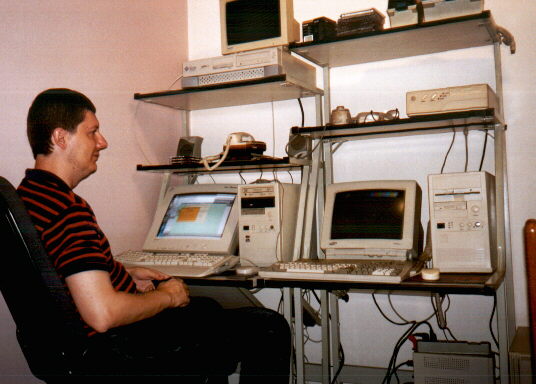 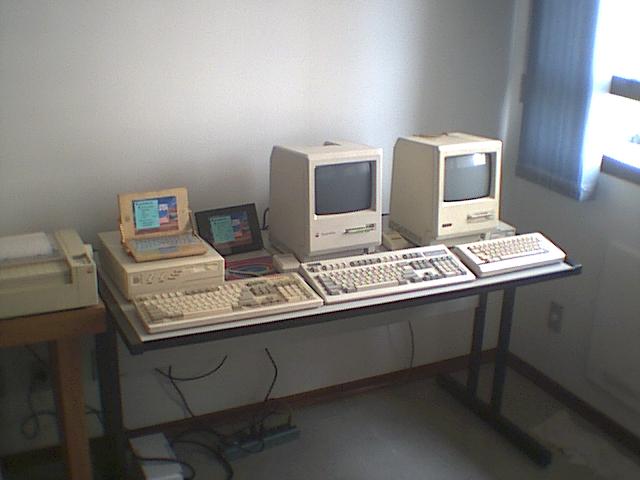
| O desenvolvimento de software via a substiuição constante das EPROMs acabou danificando o primeiro protótipo do Merlin 4. Um segundo foi construido e colocado num gabinete fino de PC (não tinha unidade de disquete apesar das fotos darem esta impressão). | Software development via the constant swapping of EPROMs ended up damaging the first Merlin 4 prototype. So a second was build and placed in a slim PC case (it didn't have a floppy disk drive even though the pictures give the impression that it did). |
| Estas fotos são de 1998 e 2001, respectivamente. | These pictures are from 1998 and 2001, respectively. |
1997
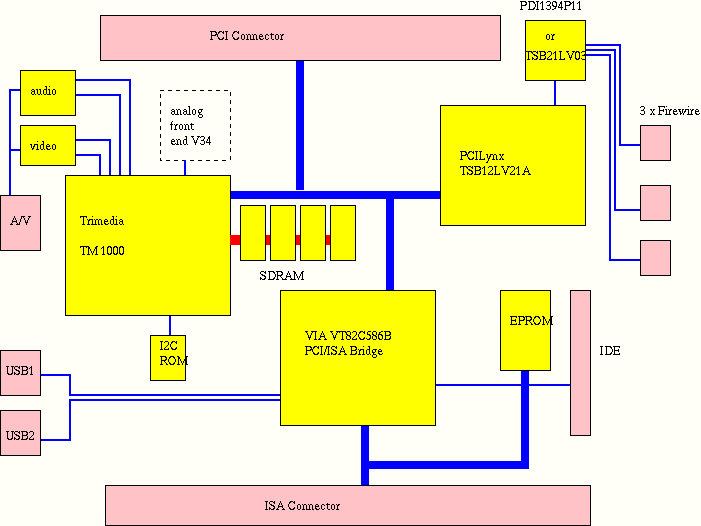
| O processador Trimedia da Philips permitiria ao Merlin 5 ser compacto o suficiente (formato PC104+) para aplicações tipo "wearable computers". | The Philips Trimedia processor would allow Merlin 5 to be sufficiently compact (PC104+ format) to be used in wearable computer applications. |
1998
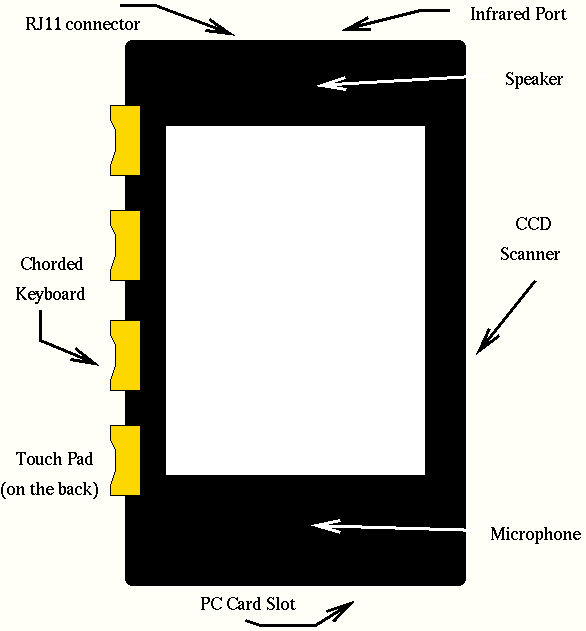
| A idéia do Merlin 4.7 era aproveitar a experiência com o Merlin 4 mas com componentes mais modernos (StrongARM) numa aplicação tipo PDA. | The idea behind Merlin 4.7 was to use the experience with Merlin 4 but with modern parts (StrongARM) in a PDA kind of application |
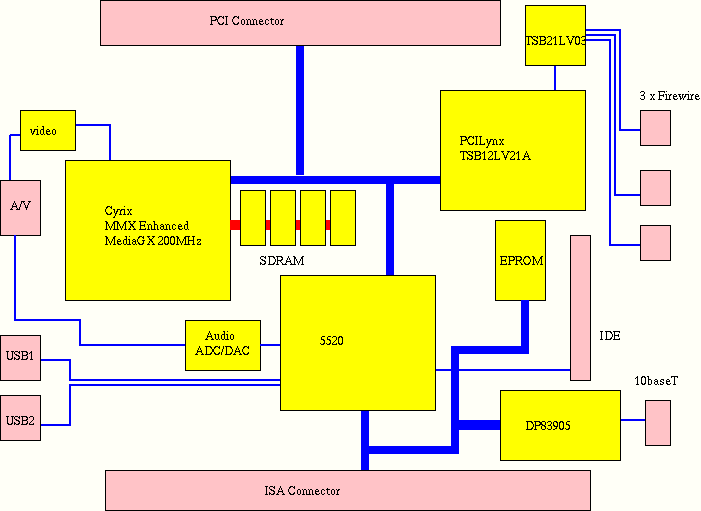
| Aqui o Merlin 5 foi reprojetado para usar o MediaGX da Cyrix (depois da National e agora da AMD) em função da falta de informações sobre o Trimedia. | Here Merlin 5 was redesigned to use the Cyrix (later National and now AMD) MediaGX due to a lack of information about the Trimedia. |
1999
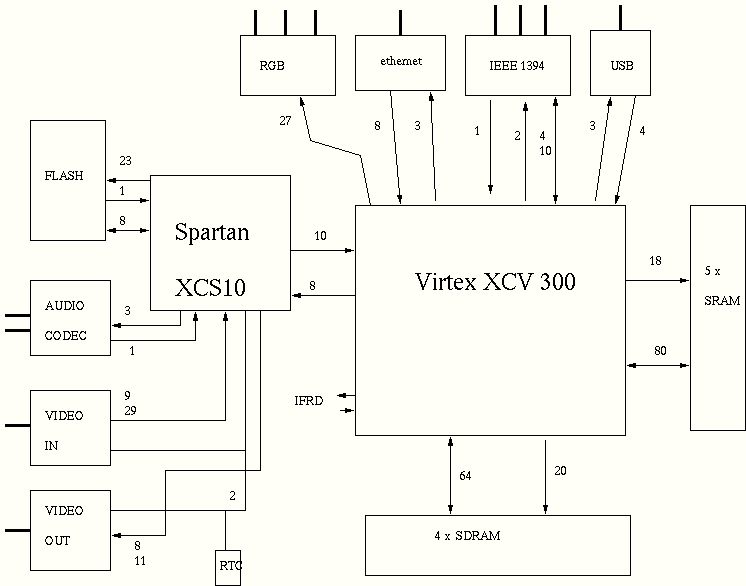 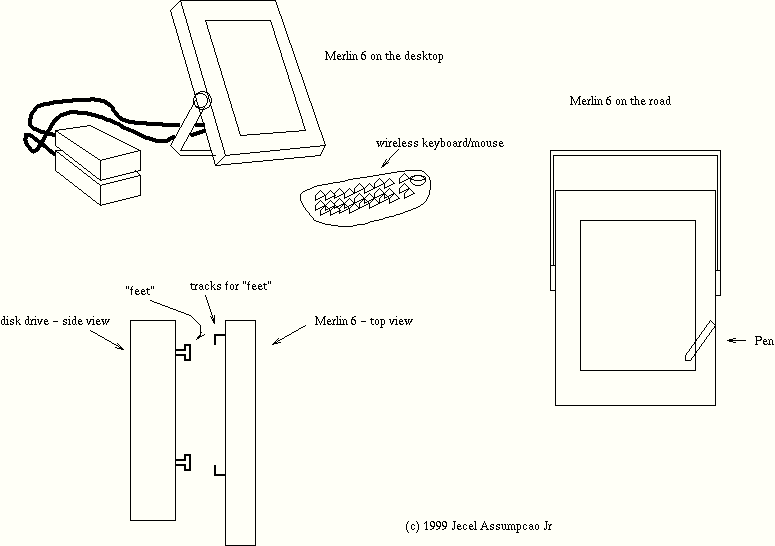
| O projeto original do Merlin 6 procurava integrar o máximo possível na FPGA principal. Um componente de apenas 300 mil portas custava cerca de $650 na época, comparável com processadores de topo de linha. A idéia era que em comparação com laptops a diferença não seria tão grande em função dos altos custos do cristal líquido e tela sensível ao toque. O processador Tachyon precisava de uma memória cache externa de alta velocidade. O formato da máquina seria o que hoje é chamado de "Tablet PC" e havia uma opção de encaixar periféricos externos de modo que o conjunto fosse fácil de se carregar. | The original project for Merlin 6 tried to integrate as much as possible into the main FPGA. A component with only 300 thousand gates cost around $650 at the time, the same as high end processors. The idea was that in comparison with laptops the difference would not be as large due to the high costs of the LCD and the touch screen. The Tachyon processor needed a very high speed external cache. The form factor was what today would be called a "Tablet PC" and there was the option of attaching external peripherals in such a way that the whole system would be easy to carry. |
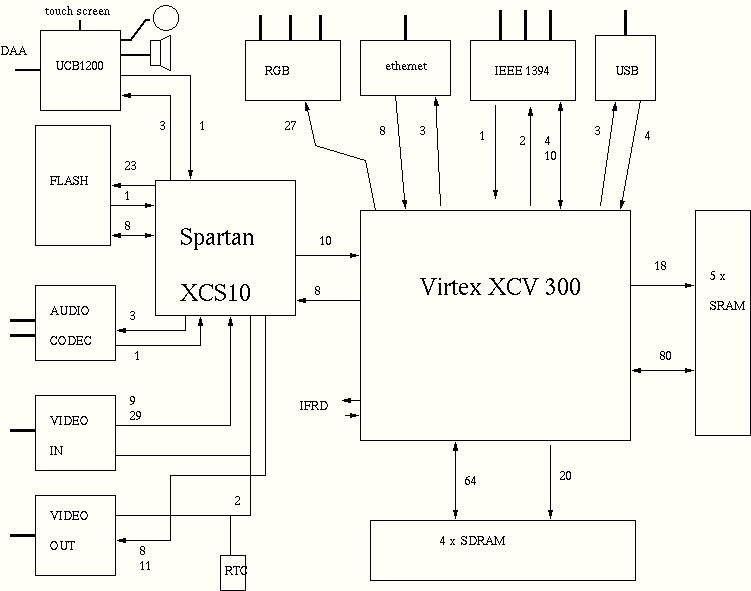 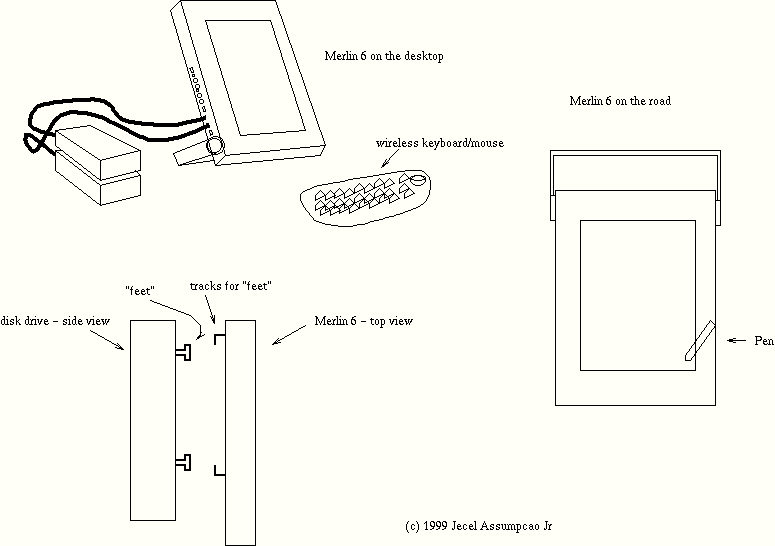
| A mudança aqui foi a inclusão de um circuito para a tela sensível ao toque e entrada e saída de som. No gabinete os conectores passaram da parte de trás para o lado e a alça foi encurtada para não interferir com os fios. | Here the change was the addition of a circuit for the touch screen and sound i/o. For the case the connectors were moved from the back to the side and the handle became much shorter in order not to interfere with the wires. |
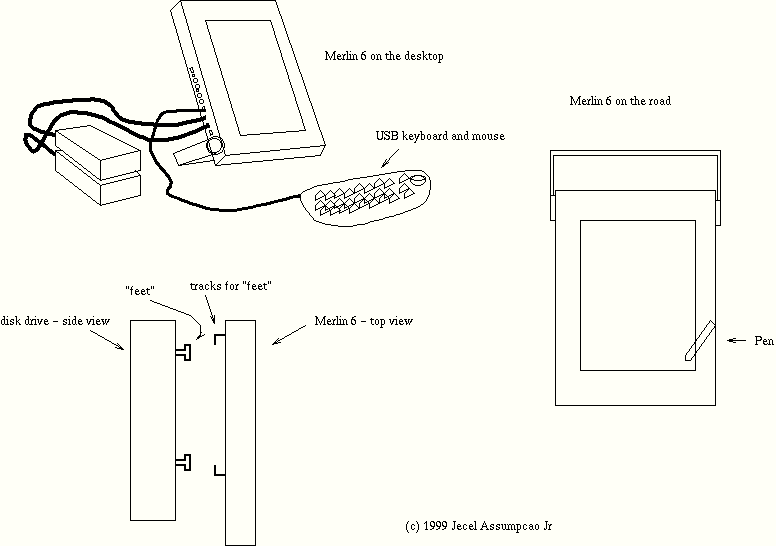
| O teclado sem fio foi trocado por um USB. | The wireless keyboard was replaced by an USB one. |
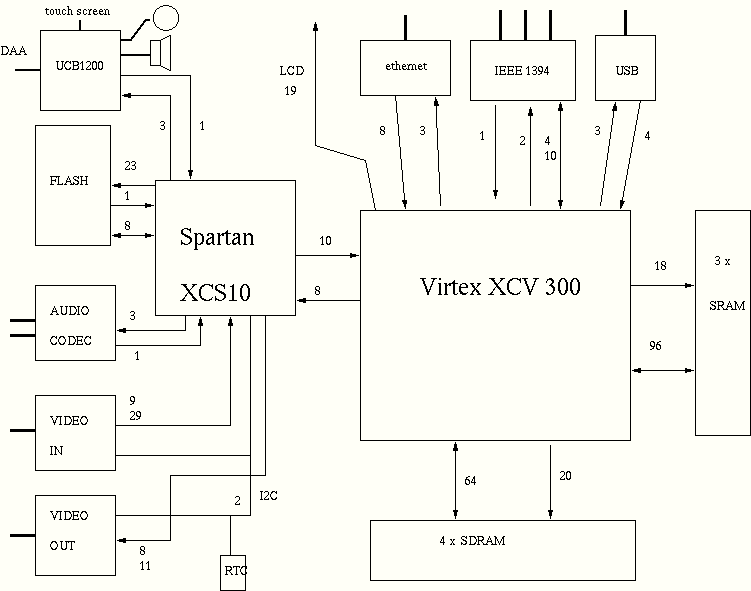 
| A saída SVGA foi trocada por uma interface direta com o cristal líquido. A alça voltou a ser comprida (a versão curta seria muito instável) mas dá a volta pelo outro lado para continuar não interferindo com os fios. | The SVGA output was replaced by a direct interface to the LCD. The handle went back to being long (the short version would have been too unstable) but now turns the other way around in order to continue not to interfere with the wires. |
2000
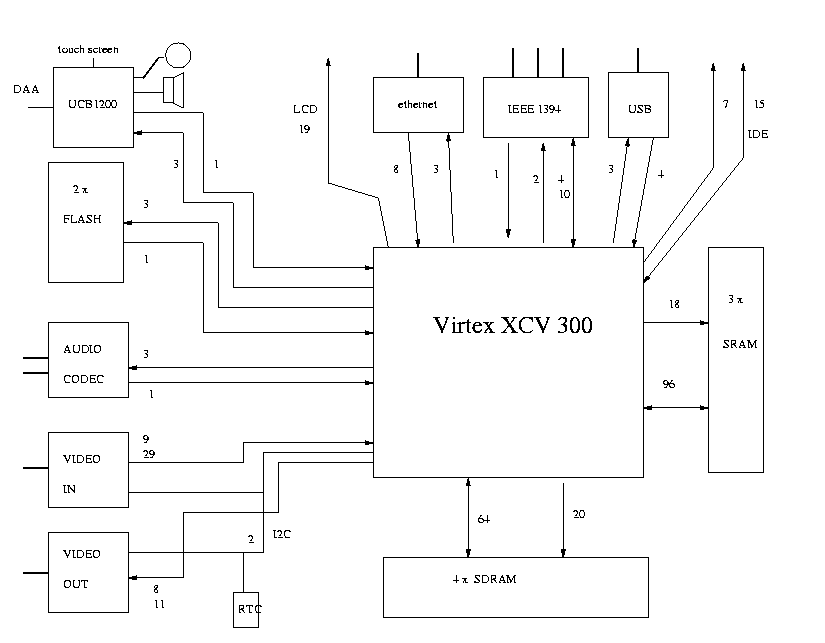
| A FPGA auxíliar foi eliminada. | The helper FPGA was eliminated. |
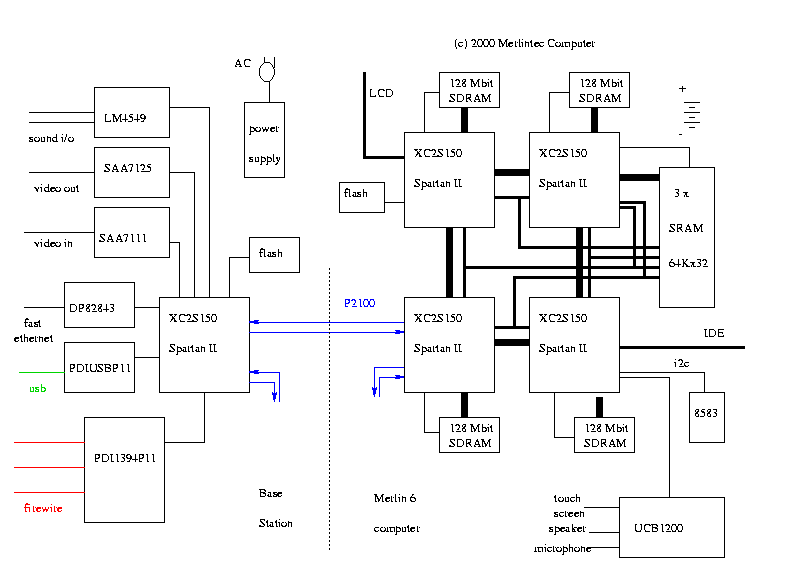 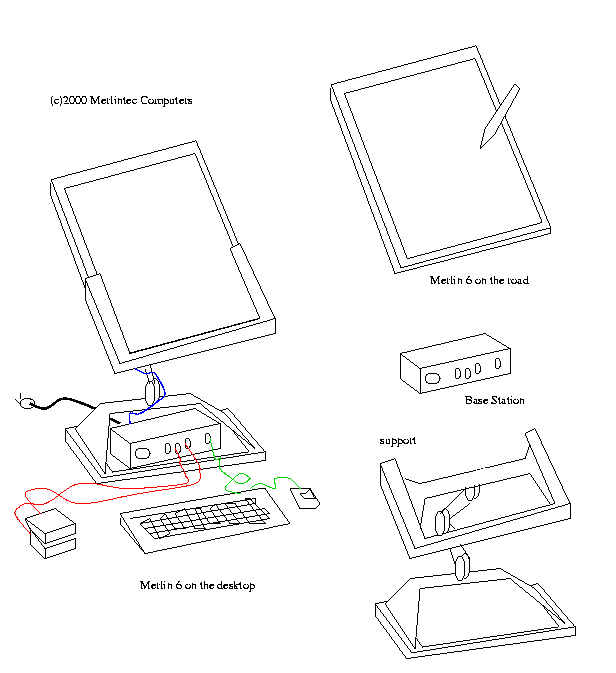
| A nova família de FPGAs Spartan 2 era suficientemente mais barata que a Virtex que 4 XC2S150 custavam menos que uma única XCV300 apesar de totalizarem o dobro das portas lógicas. O processador Tachyon era suficientemente modular que poderia ser dividido em 4 fatias. Colocando todas as entradas e saídas numa placa separada bastaria ligar um único fio para passar da configuração móvel para a de mesa. | The new Spartan 2 FPGA family was sufficiently cheaper than the Virtex that 4 XC2S150 cost less than a single XCV300 even with twice the total logic gate count. The Tachyon processor was sufficiently modular that it could be divided into 4 slices. By placing all the i/o ports in a separate board, only a single wire would need to be connected to go from the mobile configuration to the desktop one. |

| Mais de um módulo de computação poderia ser ligado a uma única base, formando um computador mais potente e com 3 telas. | More than one compute module could be connected to a single base, making a more powerful computer and with 3 screens. |
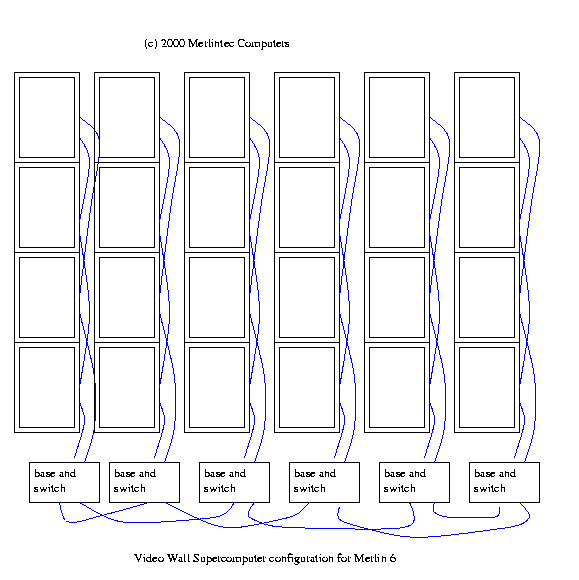
| Levando isto ao limite seria possível montar um supercomputador capaz de gerar imagens incríveis numa tela gigante. Depois, os mesmo módulos poderiam ser distribuidos entre os alunos como computadores individuais. | Taking this to an extreme it would be possible to create a supercomputer capable of generating incredible images on a giant screen. Later, the same modules could be distributed among a group of students as individual computers. |
2001
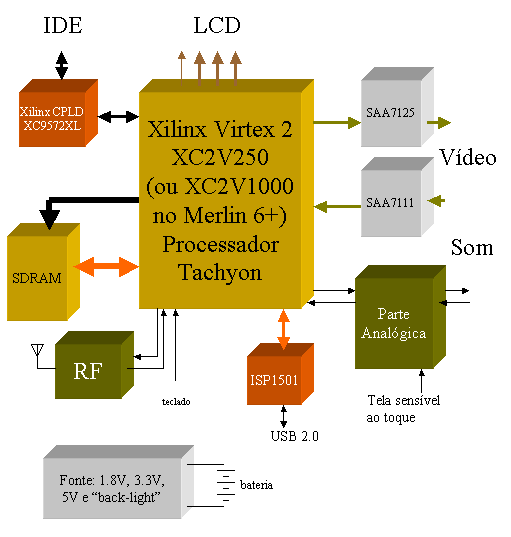 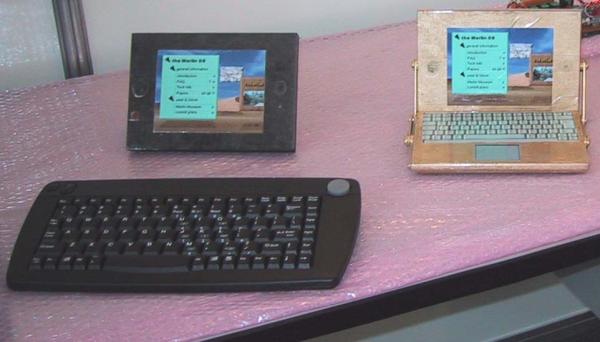
| Com o aumento da memória nas FPGAs o Plurion (múltiplos processadores simples) se tornava uma alternativa atraente ao Tachyon (único processador paralelo) por não precisar de tecnologias de compilação tão complexas. Dois modelos de madeira foram construidos para mostrar o tamanho e peso intermediário entre um laptop e um PDA. | With the increasing memory in FPGAs, Plurion (multiple simple processors) became an attractive alternative to Tachyon (a single parallel processor) since it didn't need such a complex compilation technology. Two wooden models were built to show the size and weight between that of a laptop and a PDA. |
2003
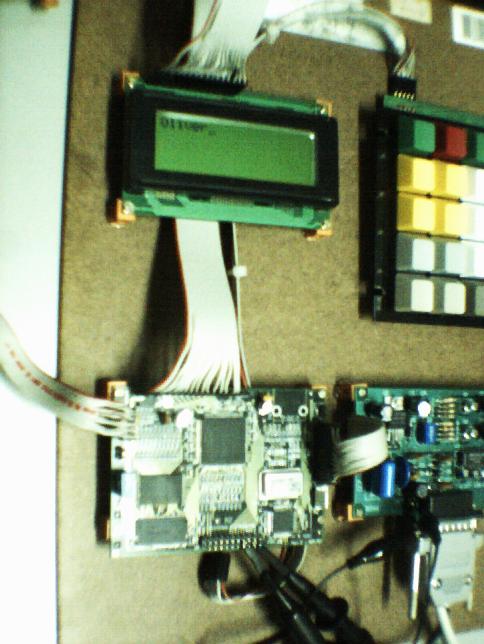
| A nova placa de terminal de caminhoneiro escreve seu primeiro texto no cristal líquido. Usa a mesma tecnologia do Merlin: FPGA, Flash, SDRAM. | The new truck terminal board writes its first text to the LCD. It uses the same technology as Merlin: FPGA, Flash, SDRAM. |
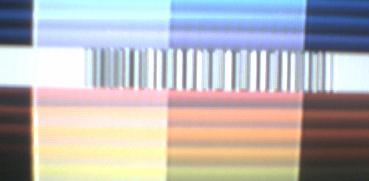
| Teste de saída de televisão NTSC e do leitor de código de barras na placa acima. | A test of the NTSC video output and the bar code reader in the above board. |
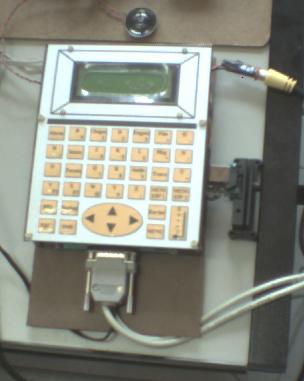
| Segundo protótipo do terminal de caminhoneiro. | Second prototype of the truck terminal. |
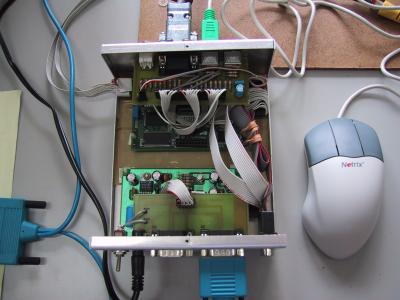
| Uma adaptação do terminal de caminhoneiro para demonstrações como computador de baixo custo. | An adaptation of the truck terminal board for demonstrations as a low cost computer. |
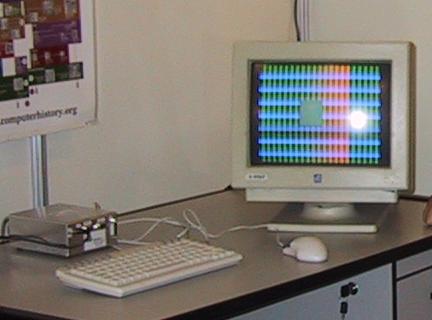
| Demonstração de criação de desenho. | Drawing demonstration. |
2006
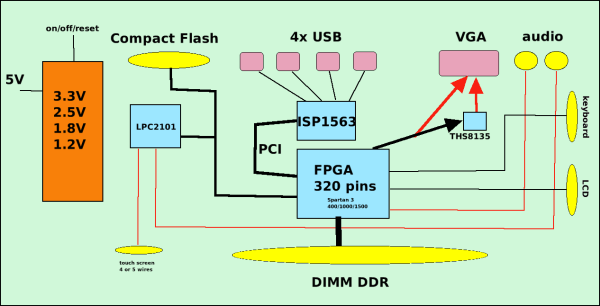
| Novo diagrama de blocos do Merlin 6 com a CPLD substituída por um processador ARM capaz de escolher um arquivo no cartão Compact Flash para programar a FPGA | New Merlin 6 block diagram with the CPLD replaced with an ARM processor capable of selecting a file in the Compact Flash card to program the FPGA |
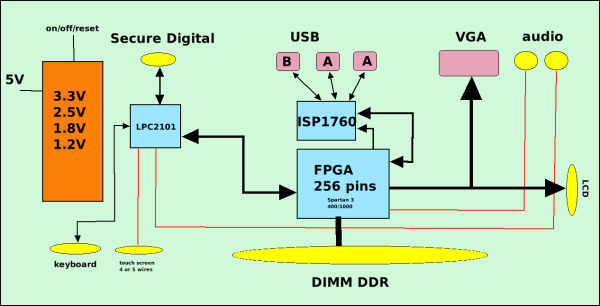
| Alteração no diagrama de blocos: o cartão Compact Flash foi trocado por Secure Digital para ficar compatível com o OLPC e a FPGA foi trocada por uma de 256 pinos para reduzir a placa de 6 para 4 camadas. O teclado agora fica ligado ao ARM. As interfaces de LCD e VGA agora são mutuamente exclusivas. Uma porta USB agora é tipo periférico para permitir redes de baixo custo | More changes to the block diagram: the Compact Flash card has been replaced by Secure Digital to be compatible with OLPC and the FPGA has been replaced with a 256 pin one to reduce the number of layers on the board from 6 to 4. The keyboard is now connected to the ARM. The LCD and VGA interfaces are now mutually exclusive. One USB port is now a peripheral one to allow really low cost networking |
2009
See http://www.siliconsqueak.org/
|































